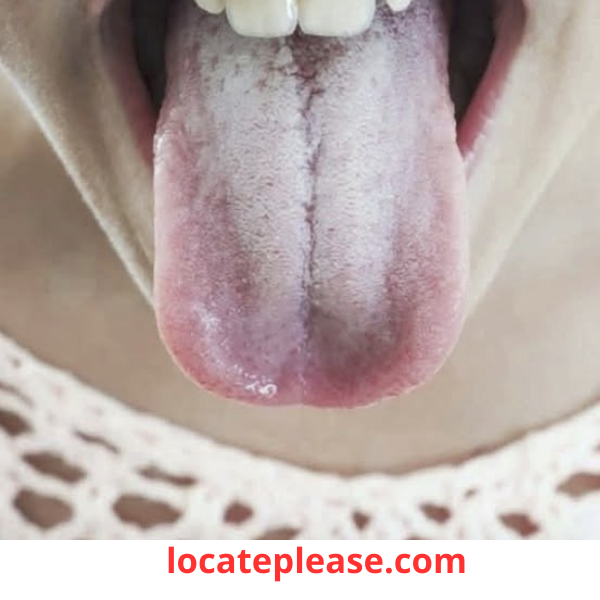The human body has an incredible way of signaling when something isn’t quite right, and your tongue is no exception. A white tongue, while often harmless, can sometimes indicate underlying health conditions that shouldn’t be ignored. Whether it appears as a uniform coating or spotty patches, a white tongue can result from a variety of causes, ranging from minor lifestyle factors to more serious medical concerns.
If you’ve noticed changes in the appearance of your tongue, understanding the potential causes can help you determine whether it’s time to seek medical advice. Let’s explore some of the most common reasons behind a white tongue and what they might mean for your overall health.
1. Poor Oral Hygiene
One of the most frequent causes of a white tongue is inadequate oral hygiene. When bacteria, food particles, and dead cells accumulate on the surface of the tongue, they can create a whitish coating. This buildup is often the result of not brushing your teeth regularly, neglecting to clean your tongue, or skipping flossing.
What You Can Do:
Maintain good oral hygiene by brushing your teeth twice daily, using a tongue scraper to remove debris, and rinsing with an antibacterial mouthwash. Regular dental checkups are also essential for keeping your mouth healthy.
2. Dehydration
Dehydration can cause your mouth to become dry, which may lead to a white or pale tongue. Saliva plays a crucial role in washing away bacteria and maintaining oral health, so a lack of saliva due to dehydration can allow these substances to build up.
What You Can Do:
Drink plenty of water throughout the day to stay hydrated. If dry mouth persists despite adequate hydration, consult a healthcare professional, as it could be related to other conditions like Sjögren’s syndrome or medication side effects.
3. Oral Thrush (Candidiasis)
Oral thrush is a fungal infection caused by an overgrowth of Candida albicans , a type of yeast naturally present in the mouth. When this balance is disrupted—due to factors like antibiotics, weakened immunity, or diabetes—white patches may develop on the tongue and inner cheeks. These patches can sometimes be wiped off but may leave red, irritated areas underneath.
What You Can Do:
If you suspect oral thrush, see your doctor. Treatment typically involves antifungal medications, either topical (like lozenges) or oral (such as pills). Maintaining proper oral hygiene and managing any underlying conditions, such as diabetes, can also help prevent recurrences.
4. Smoking
Smoking is another common culprit behind a white tongue. Tobacco use can irritate the tongue and promote bacterial growth, leading to discoloration. Additionally, smoking increases the risk of leukoplakia, a condition characterized by thickened, white patches inside the mouth that cannot be scraped off.
What You Can Do:
Quitting smoking is the best course of action to improve both your oral and overall health. If you notice persistent white patches, consult a dentist or doctor to rule out precancerous changes.
5. Leukoplakia
Leukoplakia refers to the development of white or grayish patches on the tongue, gums, or inside the cheeks. While it’s usually benign, leukoplakia can sometimes progress to oral cancer if left untreated. It’s often associated with tobacco use, chronic irritation, or ill-fitting dentures.
What You Can Do:
Visit your dentist or physician for evaluation if you notice unexplained white patches. They may recommend monitoring the area or performing a biopsy to ensure there’s no risk of malignancy.
6. Geographic Tongue
Geographic tongue is a harmless condition where irregular red patches with white borders appear on the tongue, giving it a map-like appearance. The exact cause is unknown, but it’s thought to be linked to stress, hormonal changes, or vitamin deficiencies.
What You Can Do:
While geographic tongue doesn’t require treatment, avoiding spicy or acidic foods may reduce discomfort. If symptoms worsen or persist, consult a healthcare provider.
7. Lichen Planus
Lichen planus is an inflammatory condition that can affect the skin and mucous membranes, including the mouth. On the tongue, it may present as lace-like white lines or patches. Its cause is unclear, but it’s believed to involve an immune system response.
What You Can Do:
If you suspect lichen planus, visit your doctor or dentist for diagnosis and management. Treatments may include corticosteroids or other medications to alleviate symptoms.
8. Syphilis
In rare cases, a white tongue may be a sign of syphilis, a sexually transmitted infection caused by the bacterium Treponema pallidum . One of its early oral manifestations is a painless sore or patch on the tongue.
What You Can Do:
If you have unprotected sexual contact and notice unusual symptoms, including a white tongue, seek testing and treatment immediately. Early-stage syphilis is treatable with antibiotics.
9. Nutritional Deficiencies
Deficiencies in certain vitamins and minerals, particularly B vitamins (like B12), iron, or folate, can contribute to a white tongue. These nutrients play vital roles in maintaining healthy mucous membranes and preventing inflammation.
What You Can Do:
Ensure a balanced diet rich in fruits, vegetables, lean proteins, and whole grains. If dietary adjustments aren’t enough, consider taking supplements under the guidance of a healthcare provider.
10. Other Systemic Conditions
A white tongue can occasionally signal systemic issues such as autoimmune diseases, gastrointestinal disorders, or even HIV/AIDS. In these cases, the tongue’s appearance may be accompanied by additional symptoms like fatigue, weight loss, or recurrent infections.
What You Can Do:
If you experience persistent or worsening symptoms alongside a white tongue, consult a healthcare professional for comprehensive evaluation and testing.
When to See a Doctor
While many cases of a white tongue are temporary and harmless, certain signs warrant immediate medical attention:
- Persistent white patches that don’t go away after two weeks
- Pain, swelling, or bleeding in the mouth
- Difficulty swallowing or speaking
- Unexplained weight loss or fever
Early diagnosis and treatment are key to addressing any underlying health concerns effectively.
A white tongue is often nothing more than a temporary inconvenience, easily resolved with improved oral hygiene or lifestyle changes. However, it’s important to listen to your body and recognize when it might be trying to tell you something more significant. By staying informed about the possible causes and seeking timely medical advice when needed, you can take proactive steps toward better oral and overall health.
Remember, your tongue is a window into your well-being—don’t ignore what it might be saying!










